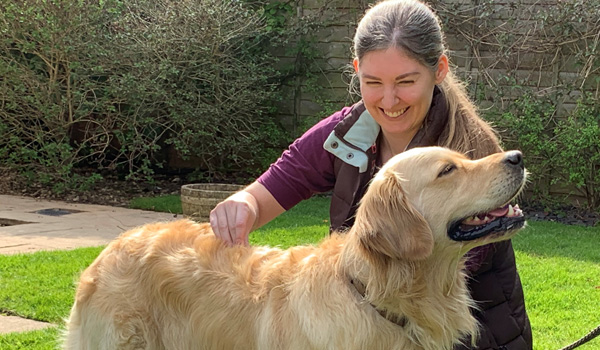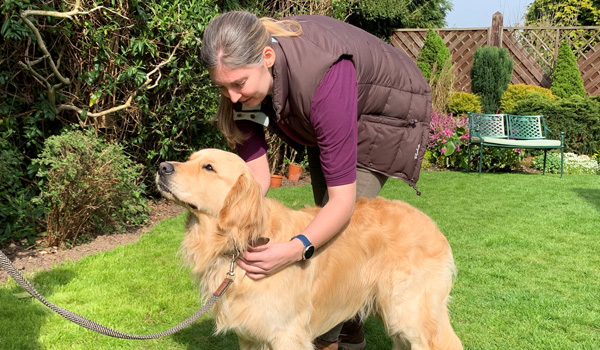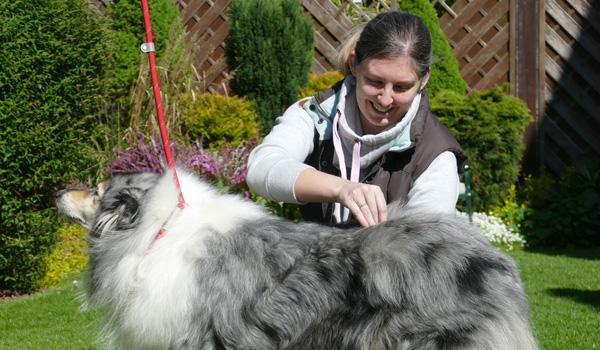
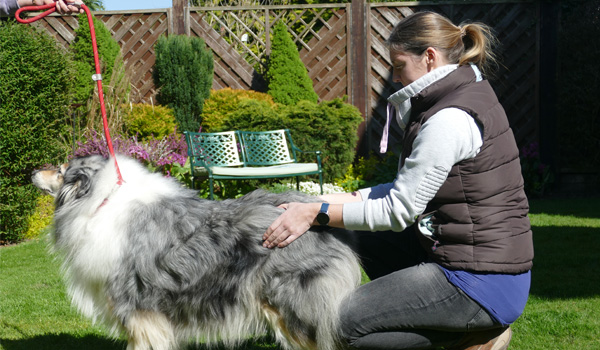
What is McTimoney?
The McTimoney treatment is a form of chiropractic developed by John McTimoney in the 1950s, with human techniques later modified for specific use on animals. It is a holistic approach which treats the body as a whole in order to realign and balance the musculoskeletal system. It has a particular focus on the spine and pelvis, and looks at the cause and not just the symptoms of dysfunction. This helps to restore and maintain health, movement, soundness and performance. It is a non-invasive, gentle physical therapy and treatment consists of precise high velocity-low amplitude thrusts using only the practitioner’s hands. Vet consent or referral is required prior to treatment in accordance with the Veterinary Surgeons Act 1966 and the associated 2015 Exemptions Order.
The spinal cord runs through the spine of the dog and nerves branch out from between each vertebrae. These nerves provide all the information that the brain needs to send to various areas of the dog’s body – such as muscles, organs, and soft tissue. Muscle tension or restrictions in the normal range of motion of the spine can compromise the normal function of this nerve supply. This results in decreased function and often pain and discomfort. Adjustments help to restore normal mobility to the spine, allowing the nervous system to return to optimal function. Treatment can also help to prevent future problems, improve muscle tone, and reduce tension.
When to seek treatment for your dog
McTimoney therapy can have benefits for all dogs, whether they are a canine athlete or a pet, and regular treatments are a great way to improve and maintain your dog’s health and wellbeing. Dogs who take part in certain disciplines – such as agility or flyball – may be more prone to certain issues, but any dog can experience an injury during work or play. Many dogs will also experience arthritic changes as they get older, and therapy can help to address some of the symptoms and compensations which arise as a result of this.
Musculoskeletal issues may be the result of acute or chronic stresses on the body. Acute problems might be caused by something like a slip or over-zealous play, whereas chronic, long-standing issues may be a result of pulling on the lead, repetitive work, or conformational factors.
There are many signs and symptoms to indicate that your dog may benefit from a treatment. Some of these are listed below, but if you would like to discuss any specific concerns about your dog then please don’t hesitate to call or email me.
- Behavioural changes
- Unexplained loss of normal performance
- Stiffness
- Reluctance to exercise or play
- Crying out when getting up
- Signs of discomfort when being stroked or groomed
- Difficulties in going up/downstairs or jumping in/out of the car
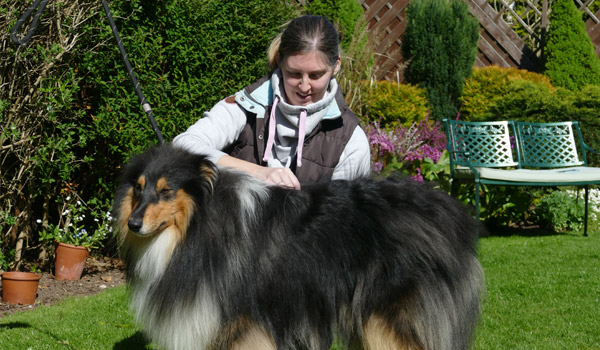
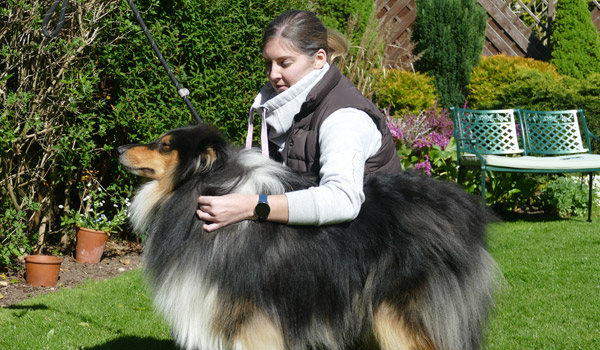
What to expect during a treatment
I will take a thorough history of your dog at the start of the consultation. This will help me to get an understanding of their day-to-day lifestyle and we will go through any previous or current illnesses, injuries, or specific concerns you have about your dog. I will also confirm that vet consent is in place.
I will next conduct a static and dynamic assessment of your dog. I will firstly observe them standing still and will then ask to see them moving at a walk and a trot. This allows me to see how your dog moves, assess for any gait abnormalities or obvious areas of restriction, and establish whether there is any lameness which would be a contraindication to treatment.
Using my hands, I will palpate the whole animal for any areas of misalignment, restriction, or tension, and will treat your dog using a combination of McTimoney adjustments and soft tissue techniques.
Finally, I will provide post-treatment aftercare advice. This may include recommendations around routine management or specific exercises, and we can also discuss any future treatments.
